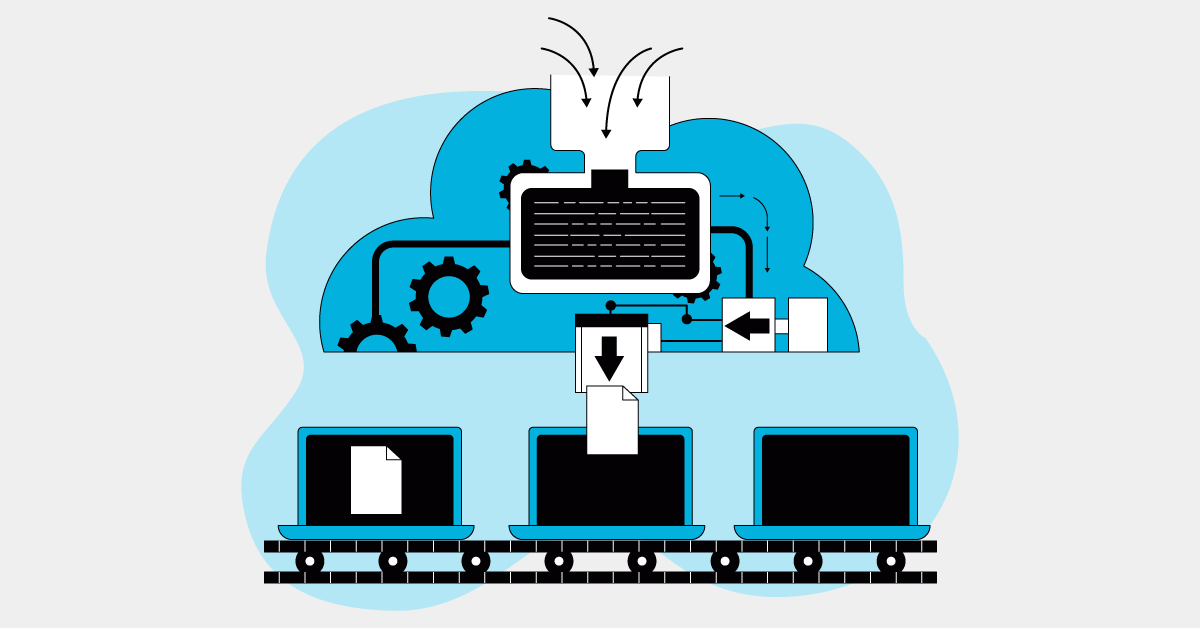Delivering high-quality software is critical, but testing can be a real headache. Common QA bottlenecks, like struggling with test data, can cause major project delays. This article offers practical solutions to streamline your testing process, including using Cypress Faker for efficient test data generation. We'll explore how to build a robust QA process so your software can truly shine.
One of the most prevalent issues is the delayed involvement of QA, which can lead to chaos. By involving QA early on and maintaining their participation throughout the development process, we can prevent them from being overwhelmed with testing tasks once development concludes. This approach is termed as Shift-Left approach. However, this approach can sometimes lead to an overload and the inadvertent oversight of critical features, resulting in defect leakage. At times, it can also be quite challenging to implement this in existing projects.
In this article, we aim to explore the major bottlenecks in QA and provide insights on how to efficiently manage them with the right approach.
Common QA Bottlenecks and How to Fix Them
Let’s understand some of the most common Quality bottlenecks and how they can be managed effectively by following the discussed steps.
Key Takeaways
- Efficient QA Practices: Solve common testing roadblocks like limited testing environments and repetitive manual tests by using cloud-based platforms and automation tools like Selenium, Appium, or Cypress. Improve test coverage with effective test data management and tools like Faker.js.
- Proactive QA Strategies: Integrate QA from the beginning of your project and establish a continuous testing process within your CI/CD pipeline. Regular communication between teams and early performance testing are crucial for smooth, efficient releases.
- Mastering Cypress and Faker.js: Combine Cypress's powerful testing framework with Faker.js to create realistic and dynamic test data. Improve your testing workflow with custom Cypress commands and fixture management for better organization and code reuse.
1. Is Your Test Environment Holding You Back?
Situation:
Ensuring the smooth functioning of software or applications across different operating systems (Windows, macOS, Linux), web browsers (Chrome, Firefox, Safari), and devices (Android, iOS) is crucial for delivering a positive user experience. However, the testing team faces challenges due to limited resources for configuring diverse testing setups.. Many times the service deployed in the QA environment is broken and not testable which delays the testing process
Solution:
To solve this problem, the company can use cloud-based testing setups offered by platforms like Sauce Labs, BrowserStack, or AWS Device Farm. These platforms have many virtual computers and real devices that can be used for testing different setups, browsers, and devices. This helps the testing team to test everything they need without having to have lots of physical computers. By using these cloud-based solutions, the testing team can test things quickly and effectively.
2. Manual Testing Overload
Situation:
An online application gets updates and new features often, so it needs to be checked thoroughly each time to make sure it works well. However, the testing team has a hard time because they have to manually test the same things over and over again. This consumes significant time and effort, resulting in delays in releasing the updates.
Solution:
To solve this problem, the company can start using automation tools like Selenium WebDriver, Appium, or Cypress.io for testing web and mobile apps. These tools can automatically test things that are done repeatedly, making the testing process faster and smoother. Also, they can set up continuous integration practices using tools like Jenkins or GitLab CI, which automatically run tests whenever there are updates.
This helps find problems early and speeds up the process of getting updates out. Using automation tools and continuous integration, the testing team can handle their workload better, reduce manual testing, and release updates faster.
3. Inadequate Test Data Management
The insufficiency of adequate test data presents a considerable challenge for QA teams, impeding their ability to conduct thorough software application testing. Without a diverse and realistic pool of test data, validating different scenarios and edge cases becomes arduous, resulting in incomplete testing coverage and the potential oversight of critical issues.
To tackle this bottleneck, organizations can adopt test data management solutions that automate the generation, organization, and anonymization of test data. Several libraries and AI tools exist to aid in efficiently generating test data. For instance, Java libraries like Faker and Mockito, or JavaScript library Faker.js, empower QA teams to create realistic test data programmatically. Moreover, AI-driven tools such as Tricentis Data Integrity, Informatica Test Data Management, and Delphix offer advanced functionalities for producing synthetic test data based on predefined patterns or production data. This ensures compliance with data privacy regulations and facilitates comprehensive testing across diverse scenarios.
4. Dependency on QA Specialists
Situation:
A small testing team has to handle many projects at once, which makes it hard to find enough resources and causes delays in testing. Also, they mostly do testing manually, which makes it hard to do more testing and slows things down.
Solution:
To fix this, the company can help the testing team learn more about automation tools like Selenium WebDriver, JUnit/TestNG, or pytest.
With these tools, testing becomes automatic, allowing the team to cover more ground in less time. Adopting agile testing methods also promotes closer collaboration between the testing and development teams. This helps make testing faster and ensures they test the most important things first. By helping the testing team learn new skills and work together better, the company can make testing easier and faster, even with limited resources.
5. Automate Your Release Pipeline with Cypress
Situation:
The development team often makes changes to the code and adds new features without telling the testing team first. So the testing team ends up testing in the old build or releases, which results in defect leakage and sometimes high-severity bugs in production. At times, due to operating in varying time zones, the development team might implement changes during PST morning, while the testing team in India can only assess them the following day. Consequently, the development team is required to await the results.
Solution:
The most effective way to address the above-mentioned issue is by automating the QA process to trigger the automation suites with every code change by developers and generate test reports. The testing team can set up continuous integration and continuous deployment (CI/CD) pipelines using tools like Jenkins, GitLab CI/CD, or CircleCI. These pipelines automatically test and deploy code changes, making sure that testing happens early and often. Make sure that all automation suites are part of the release cycle and integrated into the pipeline, so once the dev team pushes any code the automation suite should get triggered and send the respective report for analysis. Also, they can improve communication between the development and testing teams by having regular meetings and discussions. This helps everyone stay on the same page and work together better. By using CI/CD pipelines and improving communication, the company can make testing smoother and deliver software faster.
6. Building a Robust QA Process with Cypress and Faker
Having a solid QA process is very important to avoid delays in software testing. When QA is involved from the start of the project, and we make sure everyone understands what needs to be tested and how, it helps us stay focused on what the project needs. Implementing automation frameworks and integrating continuous testing into the CI/CD pipeline accelerates test execution and ensures early defect detection.
Effective communication, collaboration, and proper test environment management prevent delays caused by unavailable resources. By testing for performance and scalability early on, we can catch problems before they become big issues. Also, when we encourage everyone to keep learning and improving, it helps us stay ahead of changes in technology. This way, we can make sure our testing process runs smoothly, we test things efficiently, and we deliver good quality software on time.
7. Slow and Inefficient Test Data Generation
Generating enough realistic test data is a major challenge for QA teams. Without a diverse and realistic pool of data, validating different scenarios and edge cases becomes difficult, leading to incomplete testing and potentially missed issues. How can you be confident in your software if you haven't tested it with data that accurately reflects real-world usage?
One approach to tackle this is using test data management solutions. These solutions automate the generation, organization, and even anonymization of test data, crucial for sensitive information. There are several helpful libraries and AI tools available. For generating realistic test data programmatically, Java libraries like Faker and Mockito, or the JavaScript library Faker.js are excellent options. For example, Faker.js can create a wide range of data, from names and addresses to product descriptions.
For more advanced needs, AI-driven tools like Tricentis Data Integrity, Informatica Test Data Management, and Delphix offer powerful functionalities for creating synthetic test data. These tools can generate data based on predefined patterns or even based on your existing production data, while ensuring compliance with data privacy regulations. This allows for comprehensive testing across a wide array of scenarios, giving you a much more thorough understanding of your software's performance. For situations where complete test coverage is critical within a short timeframe, consider exploring services like those offered by MuukTest, which specializes in achieving comprehensive coverage in just 90 days.
Ready to Streamline Your QA Process?
"Quality is never an accident; it is always the result of high intention, sincere effort, intelligent direction, and skillful execution." - William A. Foster
In the world of software products & applications, maintaining quality is paramount. However, navigating through testing challenges can often cause delays in rolling out updates. Leveraging innovative solutions such as cloud-based testing setups and automation tools, alongside refining test data management practices, can significantly accelerate the testing phase and ensure timely releases. Moreover, implementing robust CI/CD pipelines and fostering seamless communication among teams can further optimize efficiency and facilitate prompt updates. By embracing these strategies, we can effectively tackle testing hurdles and deliver superior software products to our users.
Cypress and Faker.js: A Deep Dive into Test Automation
Why Use Faker.js with Cypress?
Testing often requires realistic, yet fabricated, data. That's where Faker.js shines.Benefits of Faker.js
Faker.js excels at generating realistic-looking fake data—everything from names and addresses to dates, product descriptions, and more. This is invaluable for various testing scenarios, including unit tests requiring isolated data, performance tests needing large datasets, and even creating compelling demos. It's especially helpful when you lack access to a real database or want to avoid using sensitive production data.
Where Faker.js Runs
A major advantage of Faker.js is its compatibility. It works seamlessly in web browsers and Node.js (Node.js version 18 or higher is required), making it a versatile tool for various development and testing environments.
Integrating Faker.js with Cypress
There are several ways to incorporate Faker.js into your Cypress tests:Directly Requiring Faker.js
The simplest approach is to directly require Faker.js in each of your spec files using `const faker = require('faker');`. This provides immediate access to Faker's functions within that specific file. This is a good option for smaller projects or when you only need Faker.js in a few isolated tests.
Creating a Custom Cypress Command
For a more structured and reusable approach, consider creating a custom Cypress command. This involves adding a command in your `cypress/support/command.js` file, which allows you to call Faker.js functions directly within your Cypress test code. This method promotes cleaner, more maintainable tests, especially in larger projects.
Using Fixtures
If you need a pre-generated set of fake data, storing it in a fixture file (e.g., `fixtures/user.js`) is an excellent strategy. This is particularly useful for complex test scenarios requiring consistent data across multiple tests or when you want to separate your test data management from your test logic.
Understanding Faker.js Functionality
Modular Structure
Faker.js is logically organized into modules, simplifying the process of finding the data you need. These modules cover basic data types like numbers, dates, and strings, along with topic-specific data such as animals, food, and more. Helper functions are also available for manipulating and formatting the generated data, giving you fine-grained control over the output.
API and Modules
The Faker.js API documentation is your comprehensive guide to all available modules and functions. Its well-structured format and search functionality make it easy to quickly locate the specific data generation tools you need for your tests.
Community Support and Resources
Faker.js boasts a vibrant and supportive community. If you encounter any issues or have questions, you can find assistance on Discord and GitHub Discussions. This active community ensures you're never alone when working with Faker.js.
Advanced Techniques with Cypress and Faker
Using cypress-each for Individual Tests
For running individual tests with realistic data, explore the cypress-each project. This project offers a practical example of combining Faker.js with cypress-each for more streamlined and efficient testing, especially when dealing with multiple variations of test data.
Step-by-Step Guide for Cypress and Faker Integration
Installation and Setup
Getting started is simple. Use your terminal to install Cypress and Faker.js with these commands: `npm install cypress --save-dev` and `npm install faker --save-dev`. This sets up the necessary dependencies for your project.
Creating Test Files
Create a new `.js` file (e.g., `form.spec.js`) in the `cypress/integration` folder. This file will house your Cypress tests.
Importing and Using Faker
In your test file, import Faker using `import faker from 'faker';`. You can then use its functions (like `faker.name.firstName()`) to generate the fake data you need for your test inputs. This allows you to dynamically create realistic data within your tests.
Running Tests
Use `npx cypress open` to launch the Cypress Test Runner and execute your tests. This provides a visual interface for running and debugging your tests, making it easy to identify and fix any issues.
Cypress vs. Selenium: Choosing the Right Tool
Key Differences and Considerations
Cypress and Selenium are both popular testing tools, each with its own strengths. Cypress is ideal for fast, easy front-end testing using JavaScript and provides a smoother developer experience. Selenium, while requiring more setup, is better suited for complex projects needing flexibility in programming languages and supports a wider range of browsers. Choosing the right tool depends on your specific project needs and priorities.
Cloud-Based Testing with BrowserStack
Consider using a cloud-based testing service like BrowserStack. This allows you to run both Cypress and Selenium tests across a wide array of browsers and devices, ensuring comprehensive test coverage and catching potential cross-browser compatibility issues early on.
Related Articles
- Avoid Big QA Bottlenecks and Solve Current Ones
- QA Automation Tools: The Ultimate Guide
- The Impact of a Successful Test Data Management Strategy
- Best QA Software: Top Tools & Key Features
- Your Ultimate Guide to Software Testing and Quality Assurance
Frequently Asked Questions
How can I overcome the challenge of limited testing environments and resources?
Cloud-based testing platforms offer a practical solution by providing access to a wide range of virtual machines and real devices for testing across different configurations. This eliminates the need for extensive in-house hardware and allows for efficient testing across various operating systems, browsers, and devices. Services like Sauce Labs, BrowserStack, and AWS Device Farm are good examples of these platforms.
What's a good strategy for dealing with repetitive manual testing tasks?
Test automation tools like Selenium WebDriver, Appium, or Cypress can significantly reduce the burden of manual testing by automating repetitive tasks. Coupled with continuous integration practices using tools like Jenkins or GitLab CI, automated tests can run with every code change, enabling early detection of issues and faster release cycles. This frees up QA teams to focus on more complex testing scenarios.
How can we improve the quality and efficiency of our test data?
Leverage test data management solutions and libraries to automate the generation, organization, and anonymization of test data. Libraries like Faker and Mockito for Java, or Faker.js for JavaScript, can programmatically create realistic test data. AI-powered tools like Tricentis Data Integrity, Informatica Test Data Management, and Delphix offer more advanced capabilities for generating synthetic data based on patterns or production data while adhering to privacy regulations. For rapid and comprehensive test coverage, consider specialized services like MuukTest.
What if our QA team is small and heavily reliant on manual testing?
Invest in training your QA team on automation tools and frameworks like Selenium WebDriver, JUnit/TestNG, or pytest. Adopting agile testing methodologies can also improve collaboration between development and testing teams, prioritizing testing efforts and accelerating the overall process. These strategies can enhance efficiency even with limited resources.
How can we ensure testing keeps pace with frequent code changes by developers, especially across different time zones?
Implement continuous integration and continuous deployment (CI/CD) pipelines using tools like Jenkins, GitLab CI/CD, or CircleCI. These pipelines automate the testing and deployment process, triggering automated tests with every code change and providing immediate feedback. Regular communication and meetings between development and testing teams are also crucial for maintaining alignment and addressing issues promptly.











